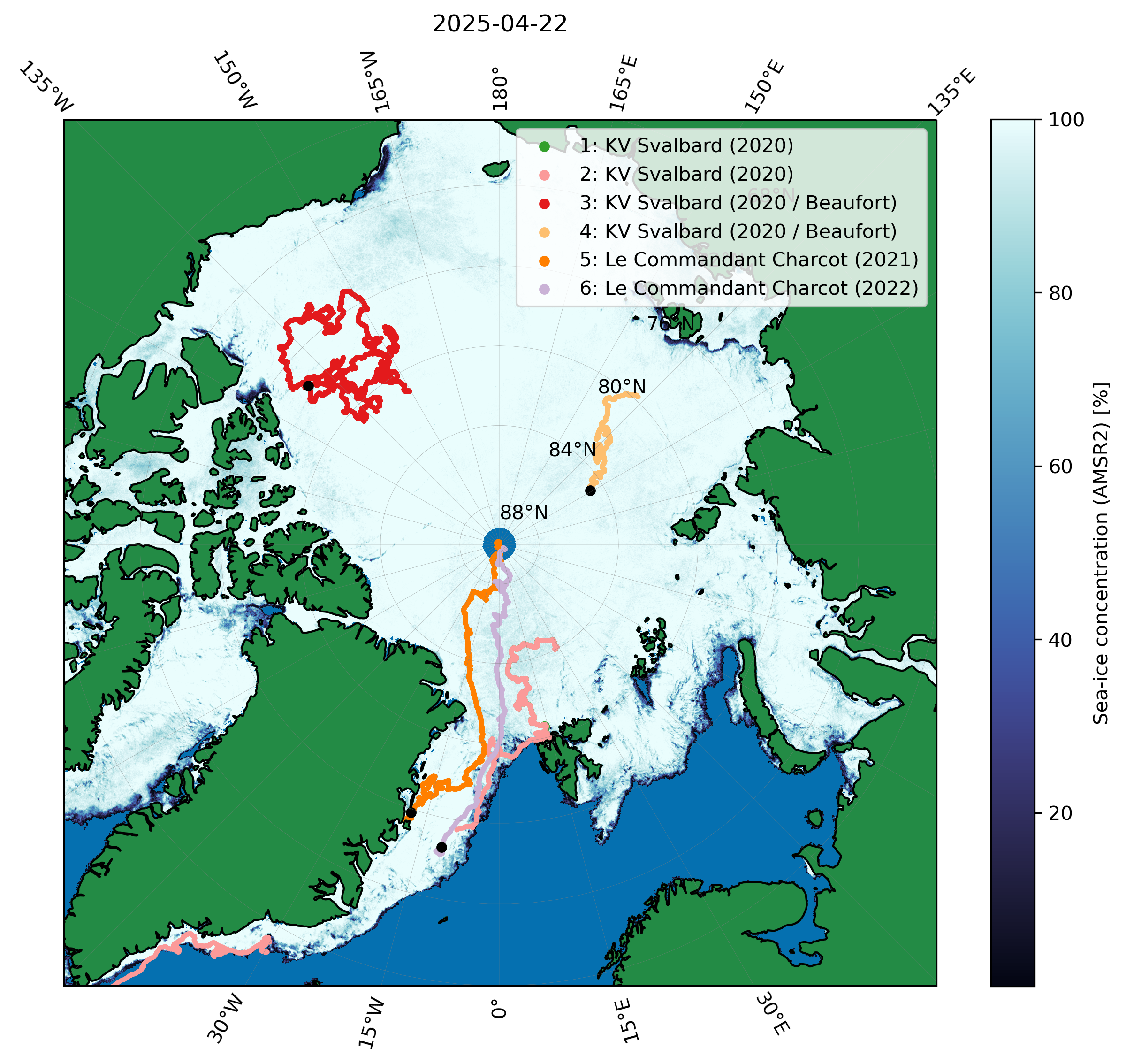
Map by Espen Storheim, NERSC. Buoy data from the International Arctic Buoy Programme and sea-ice data from University of Bremen.
What are those colourful wiggly lines all over the Arctic, you wonder?
Well, they are tracks of several ice buoys sitting on top of the sea ice that floats on the Arctic Ocean right at this moment.
Sea ice is not all rigid and still all the time - it actually moves a lot! It gets pushed around from above by winds, and from below by ocean currents. Finding out about the movement of sea ice - its drift - helps us to better understand how the Arctic responds to changes due to rising temperatures all over the world.
We are a group of scientists in Bergen, Norway, and we have started a citizen science project that you could be a part of - Float Your Boat! It is based on an idea by David Forcucci and Ignatius Rigor in the USA. When we go on research cruises to the Arctic Ocean, we take a lot of equipment with us, such as some ice buoys and wooden boats. Those wooden boats are hand-painted by students from schools that are participating in the project, and they, together with the ice buoys, help us learn about the sea-ice drift.
Do you want to know more about those buoys and wooden boats?
Then you're in the right place - let's take a look at different topics here:
- Sea-ice drift: Get some background information on the fantastic environment we work in.
- Ice buoys: Learn about what ice buoys are and what we use them for.
- What we do: Read about what we are doing with the ice buoys in the Arctic.
- Project data: Discover where the buoys have been since we left them in the Arctic.
- Fram expedition: Did you know that the Norwegian scientist and explorer Fridtjof Nansen tried to prove that sea-ice drift is real, by using a large wooden boat called Fram?
- And if you wonder about more, you can Contact us.
